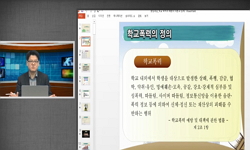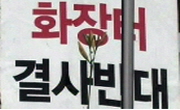본 논문은 가정 및 사회에서 폭력으로 표출되는 혐오의 감정이 본능적인 반응이 아닌 공동체에서 습득되는 것임을 현대 두 단편에서 밝히고자 한다. 이때 누스바움이 천착하고 있는 혐오감...
http://chineseinput.net/에서 pinyin(병음)방식으로 중국어를 변환할 수 있습니다.
변환된 중국어를 복사하여 사용하시면 됩니다.
- 中文 을 입력하시려면 zhongwen을 입력하시고 space를누르시면됩니다.
- 北京 을 입력하시려면 beijing을 입력하시고 space를 누르시면 됩니다.

A. 먼로, A. 프루의 단편에 나타난 혐오: 본능적 감정인가 학습된 감정인가 = Disgust in Alice Munro’s and Annie Proulx’s short stories : Instinctive or Learned?
한글로보기https://www.riss.kr/link?id=A109118137
-
저자
강병희 (한국외국어대학교)
- 발행기관
- 학술지명
- 권호사항
-
발행연도
2024
-
작성언어
Korean
-
주제어
혐오 ; 투사적 혐오 ; 원초적 혐오 ; 마사 누스바움 ; 폭력 ; disgust ; projective disgust ; primary disgust ; Matha Nussbaum ; violence
-
등재정보
KCI등재
-
자료형태
학술저널
- 발행기관 URL
-
수록면
3-26(24쪽)
- 제공처
-
0
상세조회 -
0
다운로드
부가정보
국문 초록 (Abstract)
본 논문은 가정 및 사회에서 폭력으로 표출되는 혐오의 감정이 본능적인 반응이 아닌 공동체에서 습득되는 것임을 현대 두 단편에서 밝히고자 한다. 이때 누스바움이 천착하고 있는 혐오감을 살펴보고자 한다. 누스바움은 감정이 본능적인 것이 아니라 믿음과 이해에 따른 사고 작용에 의한 것이라고 주장하며, 혐오를 원초적 혐오와 투사적 혐오로 분류하고 투사적 혐오는 학습된 감정이라고 주장한다. 1장 앨리스 먼로의「차일드 플레이」에서는 장애인을 향한 주인공의 혐오가 원초적(본능적) 혐오가 아닌 투사적(학습된) 혐오임을 증명하기 위해, 주인공이 혐오감을 어린 시절 주위 환경으로부터 부지불식간에 체화하는 과정을 분석하고자 한다. 또한 투사적 혐오가 아이들 사이에서 연대와 배제의 기제로 작동하는 것을 살펴보고자 한다. 2장 애니 프루의「브로크백 마운틴」에서는 인물들이 동성애자에 대한 혐오를 드러내고 있음을 살펴보고, 혐오가 폭력을 통해 전수 및 유지되고 있음을 증명하고자 한다. 나아가 동성애자에 대한 혐오와 폭력이 기존 이데올로기를 유지하는 역할을, 특히 주인공의 삶을 통제하는 방식을 분석하고자 한다.
다국어 초록 (Multilingual Abstract)
By analyzing the two modern short stories—Alice Munro’s “Child’s Play” and Annie Proulx’s “Brokeback Mountain”—this paper aims to show that violent expression of disgust at home and in society is not an instinctive reaction, but some...
By analyzing the two modern short stories—Alice Munro’s “Child’s Play” and Annie Proulx’s “Brokeback Mountain”—this paper aims to show that violent expression of disgust at home and in society is not an instinctive reaction, but something that is learned from the community. To make the case, this paper examines and cites Martha Nussbaum’s theory of disgust. Nussbaum delves into the feeling of ‘disgust’, arguing that emotion is not instinctive, but is the result of the action of thinking based on belief and understanding, and she categorizes the feeling of disgust into “primary disgust” and “projective disgust”. This study analyzes the process in “Child’s Play” whereby the protagonist unknowingly embodies disgust from the surrounding environment in childhood. Projective disgust is not only distinguishable from instinctive disgust, which is inherited genetically, but also works as a mechanism for solidarity and exclusion in groups. This paper also examines the ways in which disgust in “Brokeback Mountain” is transmitted and maintained through violence, preserves existing ideologies, and controls the life of the protagonist especially his fear of being an object of disgust.
동일학술지(권/호) 다른 논문
-
- 한국외국어대학교 영미연구소
- 김현정
- 2024
- KCI등재
-
Mapping the Unmappable Dublin: The Breakdown of Space and Place in James Joyce’s “Two Gallants”
- 한국외국어대학교 영미연구소
- 장성진
- 2024
- KCI등재
-
The Effects of Context on L2 Learners’ Verb Subcategorization Biases
- 한국외국어대학교 영미연구소
- 김지현
- 2024
- KCI등재
-
The British Role in US-French Security Cooperation, 1978-1987
- 한국외국어대학교 영미연구소
- 원태준
- 2024
- KCI등재




 스콜라
스콜라






